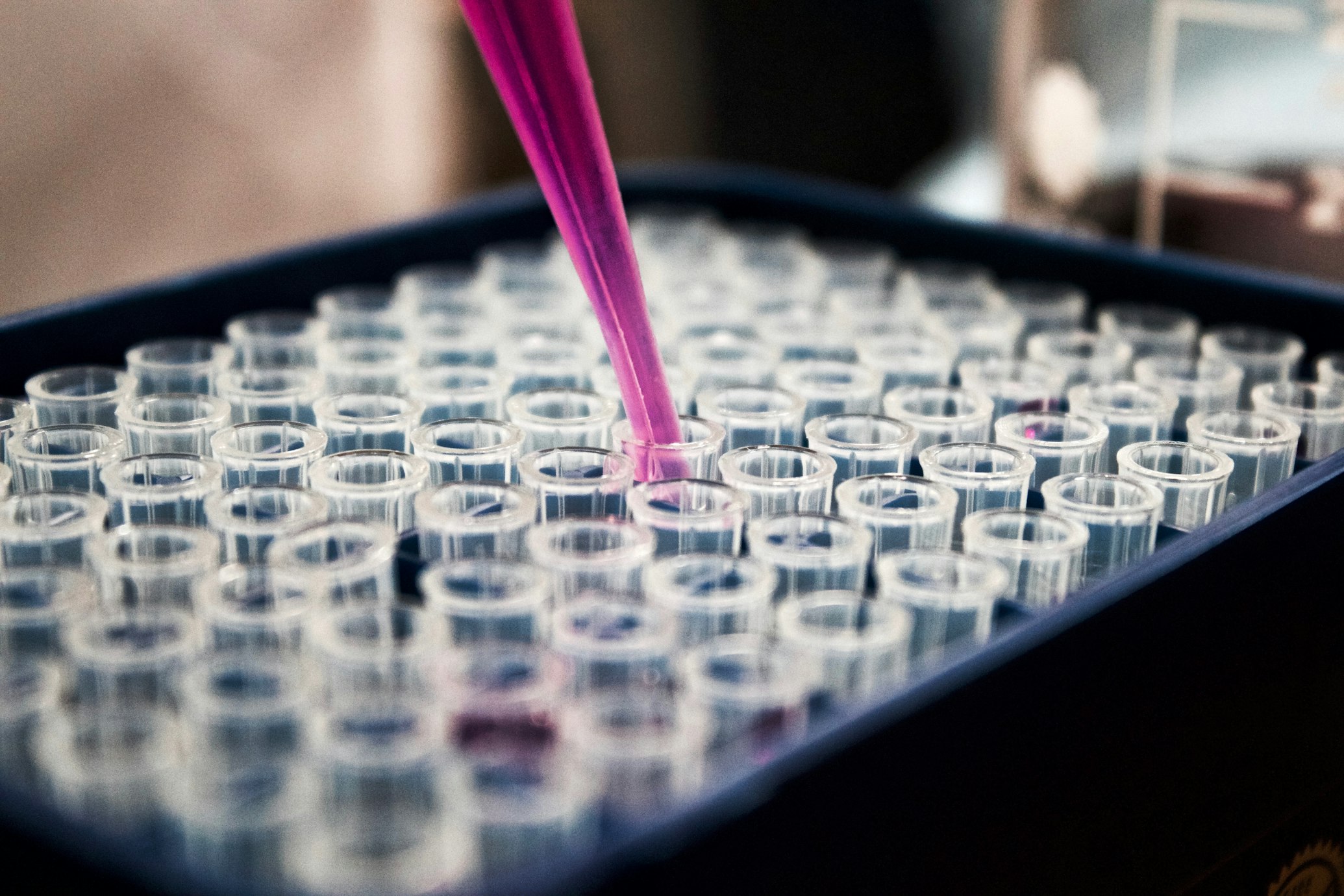Of Two Make One
The Microbial Alchemy Behind Nature's Oldest Antibiotics
The Colorful Chemistry of Survival
In 1859, French chemist Louis Pasteur first observed a blue pigment oozing from infected wounds—a molecule later named pyocyanin. This marked humanity's introduction to phenazines, a class of nitrogen-containing compounds produced by bacteria in a silent chemical warfare that shapes ecosystems from soil to human organs 6 .
Today, over 100 natural phenazines are known, celebrated for their antibiotic, anticancer, and antifungal properties. Phenazine-1-carboxylic acid (PCA), the "founder" of this molecular family, is now a registered biopesticide in China ("Shenqinmycin"), protecting crops from fungal pathogens 6 . Yet the true magic lies in how microbes assemble these molecules—a dance of enzymes that stitches two simple rings into life-saving scaffolds.

Microbial Factories
Pseudomonas aeruginosa producing blue phenazine pigments under SEM magnification.

Molecular Diversity
The phenazine core structure and its various derivatives with enhanced bioactivity.
Nature's Assembly Line
The phz Operon: Blueprint for Diversity
At the heart of phenazine biosynthesis lies the conserved phz operon (genes phzA-G). This genetic toolkit converts chorismic acid—a common metabolic precursor—into two foundational molecules:
| Gene | Function | Product |
|---|---|---|
| phzE | Converts chorismate to ADIC* | 2-amino-2-deoxyisochorismate |
| phzF | Isomerizes ADIC to DHHA* | trans-2,3-dihydro-3-hydroxyanthranilate |
| phzB | Dimerizes DHHA | Tricyclic phenazine core |
| phzG | Oxidizes the core | PCA or PDC |
*ADIC: 2-amino-2-deoxyisochorismic acid; DHHA: dihydrohydroxyanthranilate 5 6 .
This pathway is astoundingly widespread, found in >180 bacterial species across 15 phylogenetic orders—from Pseudomonas in plant roots to Streptomyces in ocean sediments 5 . Horizontal gene transfer has dispersed this molecular machinery, enabling ecological advantages from antifungal defense to electron shuttling 5 .
Structural Diversification: Nature's Chemical Toolkit
Once PCA or PDC is synthesized, enzymes decorate the core like artists adding brushstrokes:
- Hydroxylation: Monooxygenases (e.g., PhzO) add –OH groups, enhancing bioactivity. Example: 2-hydroxyphenazine shows 22% higher antifungal activity than PCA against wheat pathogens 1 6 .
- Prenylation: Terpene cyclases (e.g., Pzm1) attach lipid chains, boosting membrane penetration. Example: Phenazinomycin from Streptomyces kills cancer cells by N-prenylation 7 .
- Methylation/Oxidation: Creates derivatives like iodinin (antimalarial) or pyocyanin (antibiotic) 6 .
| Phenazine | Modification | Bioactivity |
|---|---|---|
| 3,4-OH-PCA | Dihydroxylation | IC₅₀ = 8.55 µM vs. esophageal cancer |
| Lavanducyanin | N-prenylation | Cytotoxicity vs. leukemia cells |
| Phenazine-1-carboxamide | Amidation | Electron shuttle in biofilms |
| Clofazimine (synthetic) | Rimino-group | FDA-approved for leprosy/tuberculosis |
Cracking PhzO's Dual Personality
The Catalytic Mystery
In 2025, a landmark study revealed a paradigm shift: the enzyme PhzO, long thought to solely convert PCA to 2-hydroxyphenazine (2-OH-PHZ), was caught performing "moonlight chemistry" 1 .
Methodology: Engineering Efficiency
Researchers tackled PhzO's low catalytic efficiency (10–20% PCA conversion) through biochemical ingenuity:
- Cofactor Boost:
- Expressed flavin reductase (Fre) in Pseudomonas chlororaphis to regenerate FADH₂ (PhzO's essential cofactor).
- Host Engineering:
- Heterologously co-expressed Fre + PhzO in P. putida KT2440.
- In Vitro Reconstitution:
- Incubated PhzO with PCA and FADH₂ across substrate concentrations (0–200 µM).
- Product Analysis:
- Used UPLC-MS/NMR to characterize metabolites.
- Bioactivity Testing:
- Isolated novel compounds for cytotoxicity screening against cancer lines 1 .
Results & Analysis: A Serendipitous Discovery
- Efficiency Leap: Fre co-expression skyrocketed PCA hydroxylation from 25% → 40%.
- New Metabolite: A novel blue compound emerged—3,4-dihydroxyphenazine-1-carboxylic acid (3,4-OH-PCA)—identified via NMR shifts (δ 168.2 ppm, C1-carboxyl) 1 .
- Catalytic Promiscuity: PhzO simultaneously produced both 2-OH-PCA and 3,4-OH-PCA. Substrate concentration dictated ratios:
- Low PCA: Predominantly 2-OH-PCA
- High PCA: 3,4-OH-PCA dominated 1 .
| System | PCA Conversion | Key Products |
|---|---|---|
| Native PhzO | 10–20% | 2-OH-PCA only |
| PhzO + Fre (P. chlororaphis) | 40% | 2-OH-PCA + trace 3,4-OH-PCA |
| Fre-PhzO module (P. putida) | 4.5× higher | 3,4-OH-PCA (major product) |
Data from 1 .
Enzyme Efficiency

Experimental Setup
Researchers analyzing enzyme activity using spectrophotometric methods.
Phenazine Engineering Essentials
| Reagent/Method | Function | Example Use Case |
|---|---|---|
| Fre (Flavin reductase) | Regenerates FADH₂ for monooxygenases | Boosting PhzO efficiency 4.5-fold 1 |
| Heterologous Hosts | Express pathways in tractable bacteria | P. putida for 3,4-OH-PCA production |
| phzE Universal Primers | Detect phenazine potential in metagenomes | Finding novel producers in marine Actinobacteria 2 |
| PCA Biosensor (PsoxR) | Dynamically regulate transport | Optimizing electron shuttle flux in Shewanella 4 |
| Terpene Cyclases (Pzm1) | Attach prenyl groups for bioactivity | Synthesizing antitumor phenazinomycin 7 |
Genetic Tools
Universal primers for detecting phenazine biosynthesis potential across microbial communities.
Analytical Methods
Advanced UPLC-MS/NMR techniques for characterizing novel phenazine derivatives.
Host Systems
Engineered Pseudomonas strains optimized for high-yield phenazine production.
Phenazines as Microbial Weapons and Wires
Beyond medicine, phenazines shape ecosystems:
- Antibiotic Shields: Wheat root microbiomes enlist Pseudomonas producing PCA (1 µg/g roots) to fend off fungi 5 .
- Electron Shuttles: In bioelectrochemical systems, PCA transports electrons to electrodes, boosting power density 33.75-fold in engineered Shewanella 4 .
- Biodegradation Gaps: Less than 0.1% of soil bacteria degrade phenazines, explaining their persistence in crops 5 .

Agricultural Protection
Phenazine-producing bacteria protecting wheat roots from fungal pathogens.

Energy Applications
Microbial fuel cells utilizing phenazines as electron shuttles for enhanced power generation.
The Twofold Path Forward
Phenazines embody nature's principle: "of two, make one." Two aromatic rings fuse into a scaffold that microbes modify into weapons, signals, or survival tools. With innovations like enzyme promiscuity harnessing (PhzO) and dynamic metabolic engineering (Fre co-expression), we're entering a renaissance. The next frontier? Exploiting phenazine's "electron shuttle" prowess for green energy and programming crops to recruit phenazine-producing guardians. As we decode these molecular dialogues, we unlock dual solutions: fighting disease and sustaining ecosystems—proving microbial alchemy transforms not just molecules, but our future.